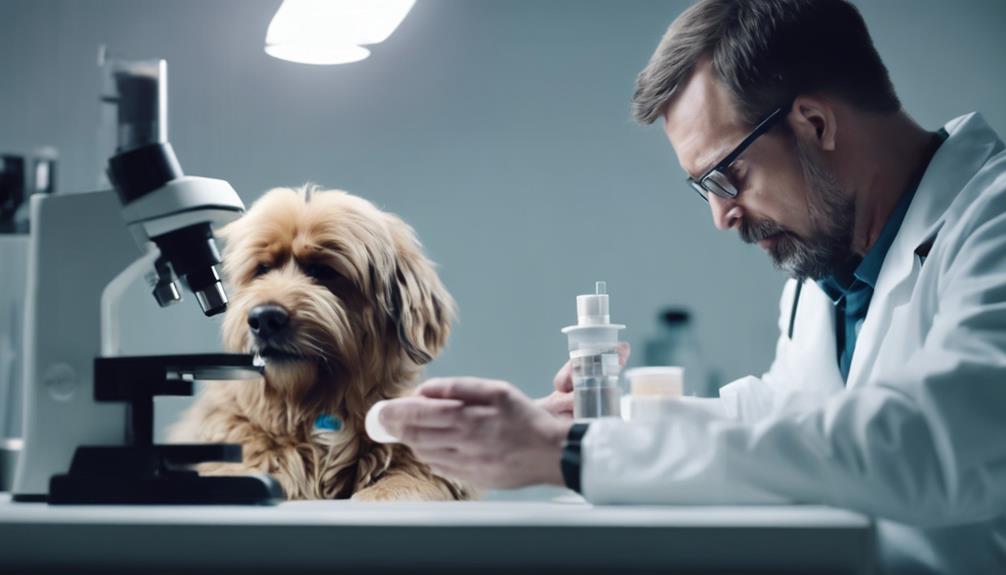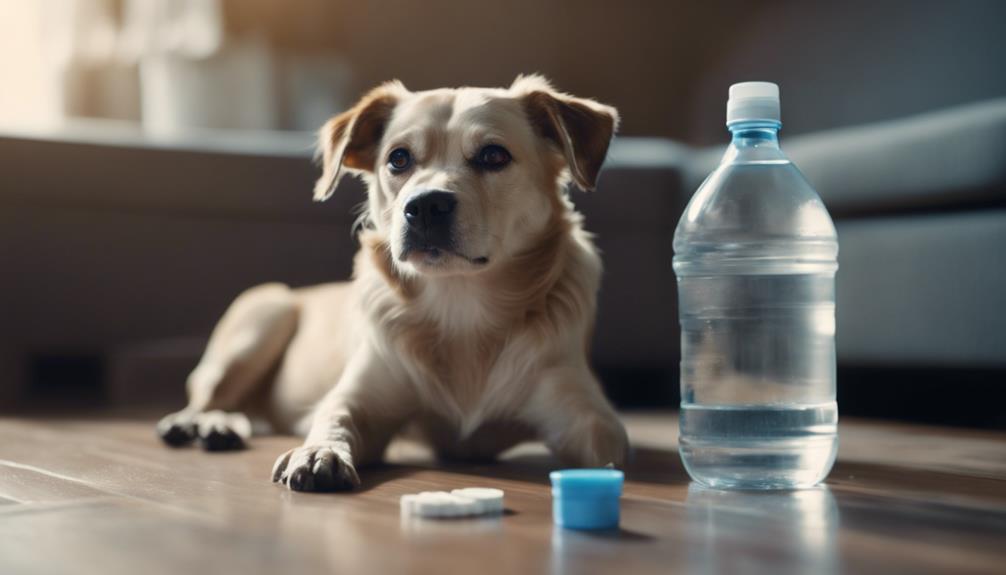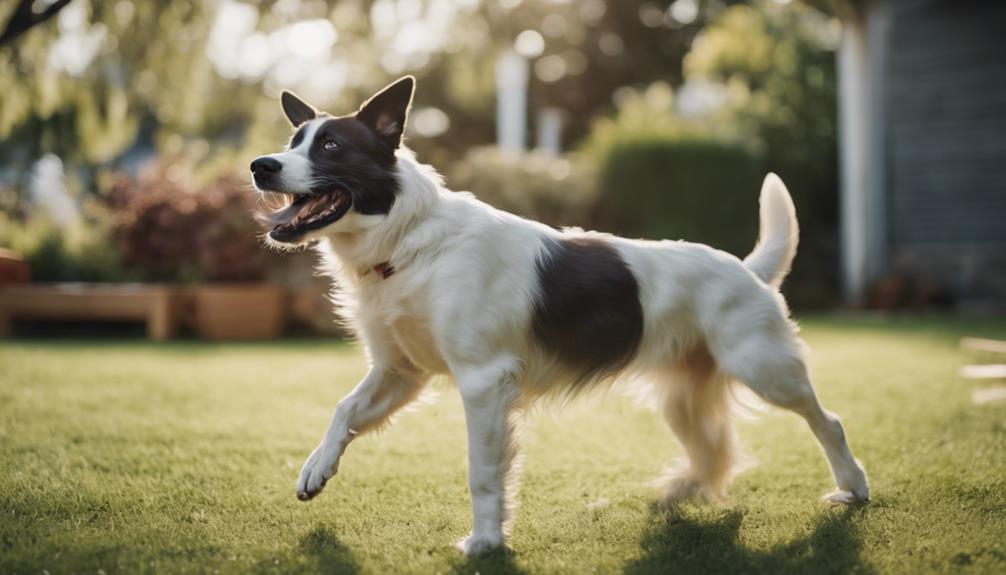Giardia infection in dogs is a prevalent concern among pet owners due to its potential health implications for both animals and humans. Recognizing the symptoms of Giardia in dogs is crucial, but understanding the most effective treatment strategies is equally important.
With the complexity of managing Giardia infections, pet owners must be well-informed about the available options to address this parasitic threat. By exploring the nuances of symptoms and treatment modalities, dog owners can better equip themselves to safeguard their furry companions' well-being.
Key Takeaways
- Giardia symptoms in dogs include persistent diarrhea and weight loss.
- Diagnosis involves examining poop for the parasite or using an ELISA test.
- Treatment with medications like fenbendazole is common under veterinary supervision.
- Prevent Giardia by cleaning the environment, removing feces promptly, and avoiding contaminated water.
Understanding Giardia Transmission
Giardia transmission occurs through the ingestion of infectious cysts shed by dogs, leading to infection in the intestines of both dogs and potentially humans. Dogs shed these cysts in their feces, contaminating various surfaces, where the cysts can survive for extended periods. Accidental ingestion of these cysts is how dogs become infected, with higher rates of infection seen in dogs frequenting dog parks.
While the zoonotic potential of Giardia means humans can also be infected, the risk of direct transmission from dogs is minimal. The primary route of human infection is through contaminated water sources rather than direct contact with infected dogs. Proper hygiene, clean drinking water sources, and prompt removal of dog feces are essential in reducing the risk of transmission to both dogs and humans.
Risks of Zoonotic Infection
An understanding of the potential risks associated with zoonotic infections stemming from parasitic transmission is crucial in veterinary and public health practices. Giardia, a zoonotic parasite found in dogs, can be transmitted to humans primarily through contaminated water sources.
While direct transmission between dogs and humans has limited evidence, the risk of contracting Giardia from dogs remains relatively low. Humans are more likely to contract Giardia from other infected humans than from dogs. Therefore, practicing good hygiene, such as washing hands thoroughly after handling dogs or their feces, is essential in minimizing the risk of zoonotic transmission.
Awareness of these risks underscores the importance of preventive measures to safeguard both human and animal health.
Symptoms and Diagnosing Giardiasis

Symptoms of giardiasis in dogs can vary from mild to severe, with common signs including persistent diarrhea and weight loss. In addition to watery diarrhea, infected dogs may exhibit lethargy, vomiting, and a dull coat. Some dogs may show no symptoms at all.
Diagnosing Giardia involves examining the dog's feces for the parasite or using an enzyme-linked immunosorbent assay (ELISA) test to detect antigens on the parasite. It is crucial to consult a veterinarian for accurate diagnosis and treatment.
Prompt identification and management of giardiasis can prevent potential complications and ensure the well-being of the infected dog.
Diagnostic Testing for Giardia
Diagnostic testing for Giardia in dogs typically involves specific methods to accurately identify the presence of the parasite and initiate appropriate treatment measures. Two common diagnostic tests for Giardia in dogs are fecal flotation and ELISA tests.
| Diagnostic Test | Description |
|---|---|
| Fecal Flotation | Involves using a special solution to separate Giardia cysts from the fecal sample for microscopic examination. |
| ELISA Test | Detects specific antigens of Giardia in the feces, providing a more accurate and rapid diagnosis. |
These tests help veterinarians confirm the presence of Giardia in dogs, allowing for timely treatment to be administered and preventing further health complications.
Treating Giardia in Dogs

When addressing Giardia infection in dogs, the primary focus lies on implementing effective treatment strategies to combat the parasitic infestation. Treatment for Giardia in dogs typically involves oral medications prescribed by a veterinarian. The most common medications used for Giardia treatment in dogs are fenbendazole and metronidazole. In some cases, a combination of medications may be necessary for more effective results.
After the initial treatment, follow-up testing may be recommended to ensure the parasite has been successfully eliminated. Additionally, thorough cleaning of the dog's environment is crucial to prevent reinfection. By following the prescribed treatment plan and maintaining a clean living space for the dog, the chances of a successful recovery from Giardia infection can be significantly improved.
Medications for Giardia Treatment
Effective treatment of Giardia infection in dogs typically involves the administration of specific oral medications prescribed by a veterinarian. Commonly used medications for Giardia include fenbendazole and metronidazole. These medications work to eliminate the parasite from the dog's intestines.
In some cases, a combination of medications may be necessary for more effective treatment. It is crucial to follow the veterinarian's instructions regarding the dosage and duration of the medication to ensure successful eradication of the parasite. Regular monitoring and follow-up testing may be recommended to confirm that the infection has been cleared.
Additionally, thorough cleaning of the dog's environment is essential to prevent reinfection and to promote the overall health and well-being of the pet.
Follow-Up Care After Treatment

After completing the initial treatment for Giardia infection in dogs, it is essential to establish a structured follow-up care plan to monitor the pet's health and confirm the successful eradication of the parasite.
Follow-up care after treatment may include:
- Regular veterinary check-ups to assess the dog's overall health and monitor for any signs of Giardia recurrence.
- Repeat fecal tests to ensure the parasite has been completely eliminated from the dog's system.
- Ongoing environmental hygiene practices to prevent reinfection, such as cleaning and disinfecting the living area and removing feces promptly.
Maintaining a vigilant follow-up care routine is crucial in preventing the reoccurrence of Giardia infection in dogs.
Preventing Giardia Infections
Upon completing the treatment for Giardia infection in dogs, establishing preventive measures is crucial to minimize the risk of reinfection and ensure the overall well-being of the pet. While there are no preventative medications available for Giardia in dogs, several strategies can help reduce the risk of infection.
Prompt removal of dog feces and preventing access to contaminated water sources are essential. Additionally, bathing dogs after they have been in ponds or lakes can help eliminate parasites. Regular cleaning and disinfection of the dog's environment, including bedding and toys, are crucial preventive measures.
Conclusion
In conclusion, understanding the transmission, symptoms, and management of Giardia infection is crucial for safeguarding the health of dogs and potentially preventing zoonotic transmission to humans.
By recognizing the signs of giardiasis, implementing veterinary-prescribed treatments, and maintaining diligent environmental hygiene practices, pet owners can effectively manage and prevent Giardia infections in their canine companions.
Stay informed, proactive, and attentive to your dog's health to mitigate the risks associated with this parasitic threat.




